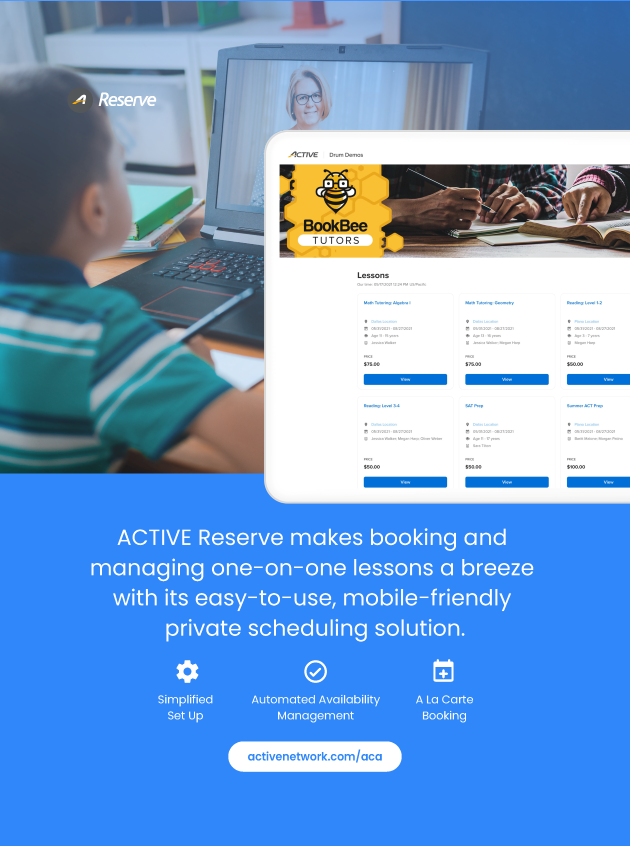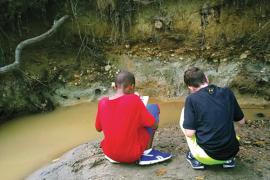How many times have you sat in a large group meeting — at camp, in a conference room, at another place of employment — and the entire leadership team walks in with solemn expressions, causing you to settle in to brave whatever earth-shattering information you are about to receive? Each time the following happens: Message communicated. Gasps uttered. Organizational change perceptible. No time for reflection is afforded. And then the speaker closes with, “Let me know if you have any questions.”
We often applaud ourselves as camp professionals for our ability to plan fun and engaging programming, prepare and carry out thoughtful operational tasks, and respond quickly to emergencies. This structure enables us to have safe and successful camp seasons year after year — but it also relies on each camp season being fundamentally the same.
Think back to the first day of camp in summer 2019. Campers arrived by the busload, disembarking and stepping into the open embrace of an expectant counselor. Children pushed through the doors of their cabins to meet their fellow bunkmates and to claim the top or bottom bunk. Campers and counselors alike linked arms around the opening campfire, breathless with anticipation of the summer's possibilities. Which amusement park are we going to this year? What will I wear to the dance when we visit our brother/sister camp?
Now fast forward to camp today. Masks. Air hugs. Quadruple the number of buses to accommodate physical distancing. In short, this summer is unlike any other most camps have ever experienced — and the perfect recipe for implementing change management theory.
The BNET Business Dictionary defines change management as “the coordination of a structured period of transition from situation A to situation B in order to achieve lasting change within an organization.” For example, leading up to this summer, situation A would have been a camp before COVID-19 and situation B a camp season amidst a global pandemic.
Michigan State University characterizes change management as a process of overseeing and facilitating change at any level where it occurs (2019). It is up to management teams, however, to decide exactly how change will be addressed.
While change management is a theory typically ascribed to the business sector, it is applicable to camp. Continuing with this season as an example, in June camps initiated and began facilitating changes at almost every level, and it was up to camp leadership to determine how said changes would roll out. All changes should have been addressed through an equity lens.
It's All Connected
Though challenging, it is essential that we do not view our programmatic work as separate from our equity work. Our equity work requires us to make camps spaces of belonging for all. So how do we navigate organizational change without losing sight of equity, inclusion, and belonging?
In our case, equity refers to myriad dimensions, but for illustrative purposes, consider racial equity. Race Forward, the Center for Racial Justice Innovation recommends a racial equity impact assessment (REIA) as a systematic examination of how different racial and ethnic groups might be affected by a proposed change, action, or decision (Keleher, 2009). REIAs are used to minimize unintentional adverse consequences in a variety of contexts, including:
- Analysis of proposed policies
- Institutional practices
- Programs, plans
- Budgetary decisions
When we allow our own perspective to shape the implementation of change, our natural implicit bias will obfuscate a comprehensive review. In contrast, the utilization of an equity impact assessment can help reduce, eliminate, and prevent discrimination and inequity in our practices, policies, and procedures.
Applied Change Management Process
Using Race Forward's REIA Guide (Keleher, 2009), following is an example of how to navigate the change management of a camp mandating vaccinations for all staff members as a condition of employment through an equity lens.
Identifying Stakeholders
Which groups may be most affected by and concerned with the issues relating to this decision? Staff members:
- With preexisting medical conditions?
- Who are or plan to become pregnant?
- Whose beliefs (religious or otherwise) do not encourage vaccines?
- Who have inherited distrust of medical systems?
Engaging Stakeholders
Involve stakeholders from different groups, especially those most adversely affected in the development of this plan. Have you:
- Assessed who is apprehensive about getting a vaccine and conversely who is not?
- Probed to identify the source of any apprehension?
- Asked all stakeholders to determine what additional information they would need to feel comfortable making this decision?
- Consulted all stakeholders, not solely your leadership teams, including support staff such as custodians, food-service providers, and grounds maintenance crews?
Identifying and Documenting Inequities
Which groups are most impacted by the issue this proposal seeks to address? Have you:
- Had a conversation among your leadership teams, boards, and/or other decision makers to really ask who this would impact?
- Parsed down each stakeholder group and thought through how each could be impacted?
- Reviewed employee applications and files to determine who may be more impacted by this decision?
- Consulted your camp's medical team to think through all scenarios and possibilities to make informed decisions?
- Consulted outside medical teams to get a broader perspective of who this could impact?
- Consulted your legal advisors to gain insight into who this decision could directly impact?
Examining the Causes
What factors may be producing and perpetuating inequities associated with this issue?
- Look at your team demographics:
- How many individuals have documented medical conditions that could influence this decision?
- How many younger (under 18) staff members do you have?
- Don’t make decisions entirely based on assumptions; ask your team members if they are comfortable sharing any sources of apprehension.
- Do research. In this case, research the:
- History of the Black, Indigenous, and people of color (BIPOC) community and medical experimentation, such as the Tuskegee Syphilis experiment, forced sterilization of women of color in California state prisons, and medical mistreatment of Indigenous people
- Biases in the American healthcare system targeting BIPOC
- Medical experimentation carried out as part of the Holocaust
Clarifying the Purpose
What does the proposed change seek to accomplish, and why does this matter? Do not approach this topic from a policies and procedures angle, but give voice to how this decision could enhance the summer:
- You could high-five a fellow vaccinated staff member when something really cool happens.
- You could potentially hug a fellow vaccinated staff member if they (or you) are having a bad day.
Considering Adverse Impacts
What are the impacts or unintended consequences that could result from this policy change?
- Whose employment status could this jeopardize?
- Might you lose people — and who would those people be? Losing any team member is a blow to morale, but a pattern can be even more damning. Might:
- All of your younger counselors reverse their decision to work at camp?
- Female team members who are considering becoming or are pregnant be rendered unable to work at camp?
- BIPOC team members be forced to rethink their employment at camp?
Advancing Equitable Impacts
Are there ways to maximize equitable opportunities?
- Consider offering alternative employment opportunities if a team member does not wish to be vaccinated, such as working in an office setting or working remotely to support camp families.
- Hire a medical professional to conduct a webinar so your team can get answers to their vaccination questions, or to hold office hours to answer team members’ questions on an individual level.
Examining Alternatives
Are there better ways to reduce inequity? Can you:
- Require people who are vaccinated only in certain positions, such as individuals on medical and leadership teams?
- Offer to support a team member who opts to abstain from vaccination in finding alternative employment, perhaps at a day camp that is not requiring vaccines?
- Conduct individual conversations with your entire team to deliver this information rather than putting it in a blanket email?
- In lieu of mandating, strongly suggest vaccination and provide context and clarity for how the decision to get vaccinated could enhance a team member’s summer, and trust your people to make their own decisions?
- Roll out a timeline and let your team know that in summer 2022 vaccines will be required, so everyone has time to prepare?
Using a structured change management process in tandem with an equity lens ensures progress in reaching the goals of the change while promoting a discrimination-free work environment for all staff to use their diverse talents to support the camp's mission.
Kindling ConnectionsThis section of Trail Mixed was written by Michele K. Synegal, MCS. Synegal is the president of Management Dynamics, Inc., a full-service diversity, equity, and inclusion consulting firm now celebrating 30 years of excellence. She is a published author and contributing writer to LinkedIn on social justice, diversity, equity, and inclusion issues. She holds a master's degree in consciousness studies and a bachelor's degree in human relations and organizational behavior. She shares an actual situation of how change management through an equity lens is used. The CompanyCongratulations are in order! The Company reached its two-year goal for increasing the representation of people of color at all levels of the organization. The journey to inclusion is long. It changes the entire culture of an organization. Plan for change strategically and carefully or experience setbacks like XYZ Corporation. Here's their story. After reaching its diversity representation goal, the next two quarters' financial performance was far from stellar at XYZ Corporation. Leadership had to make some tough decisions to keep the organization afloat until it could profit again. One obvious way to reduce operating costs was to reduce staff. Without much thought, leadership decided to lay off 20 percent of the employees hired within the past two years. Representation and compositional diversity (the sheer number of folks identifying as diverse) was a recent organizational initiative. As such, acting on that decision would have set the company's efforts to diversify the workforce back to ground zero. The equity audit that our consulting firm performed identified that the Company's hiring practices were biased against people of color. Multiple factors contributed to the state of inequity: hidden bias, organizational constraints such as underfunding of previous diversity and inclusion efforts, and a lack of rewards and recognition for progress. It viewed diversity and inclusion as a series of one-off initiatives and not part of an overall change management strategy. We used Change Management Theory to correct and frame the company's efforts:
The solution we arrived at was to use performance-based criteria. This enabled XYZ Corporation to reduce staff by 20 percent without derailing its diversity, equity, and inclusion efforts. And the company retained its best performers. Subsequently, more inclusive policies were established, blind hiring procedures implemented, recruitment efforts increased, and hiring panels were trained to recognize and mitigate implicit bias. When organizations embark on inclusion, they must look at every business transaction through a change management lens. Diversity, equity, and inclusion should be integral to every business decision if that is the vision. Most important, leadership has to demonstrate its commitment by staying the course during times of feast and famine. These political times call for deep commitment to mitigate any form of exclusion of diverse people from having access to employment, promotion, and social justice. Leaders must think strategically, systemically, and humanly about their vision for change. Cultural change takes time and perseverance, so leaders must adopt a long-term view and recognize that transforming people who make life-altering decisions requires a genuine shift in consciousness — one that forges vision, goals, and strategies from commitment to the corporate vision, forsaking expediency. The verdict is in. Diverse organizations perform better. Most studies surrounding diversity in the workplace have found that for every 1 percent increase in gender diversity, company revenue increases by 3 percent. Higher levels of ethnic diversity increase revenue by 15 percent. Change management is relatively simple; it is inner and outer work that changes people's hearts and minds to support the changes that facilitate inclusion by developing individual and institutional integrity and responsibility, steadfastness, and accountability. Embrace diversity — and change and your organizations will thrive. We thank you, Michele. |
Photo courtesy of Camp Summit, Paradise, TX.
Makela Elvy, M Ed, is an environmental educator and camp enthusiast. Along with Briana, she is also the cofounder of S'more Melanin — a platform dedicated to providing resources for BIPOC camp professionals. Over the course of her career, Makela has held camp positions ranging from head counselor to program manager. Her experience includes nature interpretation, curriculum development, and the creation of a 10-week venture program rooted in experiential learning.
Briana Mitchell has been a camp attendee since the age of six and a previous camp counselor and Teach for America Corps member. She is the director of AF Camp, a Change Summer camp, where she works to create high-quality summer opportunities for students that will increase their overall confidence, responsibility, curiosity, and independence. She is also the cofounder of S'more Melanin — a platform dedicated to providing resources for BIPOC camp professionals.
References
- Keleher, T. (2014, March). Racial equity impact assessment. Race Forward, the Center for Racial Justice Innovation. Retrieved from raceforward.org/sites/default/files/RacialJusticeImpactAssessment_v5.pdf
- Michigan State University. (2019, July 15). Organizational change management. Retrieved from michiganstateuniversityonline.com/resources/leadership/organizational-change-management/
- Teece, D., Pisano, G., & Shuen, A. (1997). Dynamic Capabilities and Strategic Management. Strategic Management Journal, 18(7), 509-533. Retrieved from jstor.org/stable/3088148'
For More Information
- Talk to Michele Synegal. Find her at: managementdynamicsinc.com
- Read Resistance to Diversity and Inclusion Change Initiatives: Strategies for Transformational Leaders: verticleleadership.com/wp-content/uploads/2019/12/OD-Journal-Fall-Velasco_Sansone-2.pdf
- Research Racial Equity Tools resources on change process at: racialequitytools.org/resources/plan/change-process




